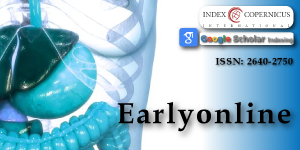Gilbert’s Syndrome Revealed by Hepatotoxicity of Imatinib
Main Article Content
Abstract
Gilbert’s Syndrome (GS) is a hereditary disease that can cause hyperbilirubinemia due to a mutation in the promoter of the UGT1A1 gene, which causes a decrease in uridine diphosphate glucuronyltransferase enzyme activity. Polymorphisms in the UGT1A1 gene are associated with induced hyperbilirubinemia by Tyrosine Kinase Inhibitors (TKI) in Chronic Myeloid Leukemia (CML).
We report a case of patient who developed hepatotoxicity when treated on Imatinib and subsequently diagnosed with Gilbert’s syndrome. Eight months after initiating Imatinib, the patient developed conjunctival jaundice and signs of hepatotoxicity with increase in liver enzymes and hyperbilirubinemia with elevated level of unconjugated bilirubin. Gilbert’s syndrome was suspected in the presence of predominantly unconjugated hyperbilirubinemia and a prior history of transient episodes of jaundice. Genetic testing revealed homozygosity for the UGT1A1 TA7 (*28) polymorphism. Imatinib was stopped due to continuous increase of aminotransferases and hyperbilirubinemia and restarted after improvement of Liver Function Tests (LFTs) with a reduced dose of 200 mg/day but LFTs worsted again, and the patient was switched to Dasatinib 100 mg/day, without hepatic cytolysis and a mild persistent hyperbilirubinemia after a follow up of 20 months.
Patients with an unexplained rise in serum bilirubin levels on Imatinib therapy should be screened for the genetic UGT1A1 polymorphisms.
Article Details
Copyright (c) 2025 Amor IB, et al.

This work is licensed under a Creative Commons Attribution 4.0 International License.
Fretzayas A, Moustaki M, Liapi O, Karpathios T. Gilbert syndrome. Eur J Pediatr. 2012;171(1):11-15. Available from: https://doi.org/10.1007/s00431-011-1641-0
Mi X, Yan J, Ma X, Zhu G, Gao Y, Yang W, et al. Analysis of the UGT1A1 genotype in hyperbilirubinemia patients: differences in allele frequency and distribution. Biomed Res Int. 2019;2019:6272174. Available from: https://doi.org/10.1155/2019/6272174
Zhang N, Liu Y, Jeong H. Drug-drug interaction potentials of tyrosine kinase inhibitors via inhibition of UDP-glucuronosyltransferases. Sci Rep. 2015;5:17778. Available from: https://doi.org/10.1038/srep17778
Druker BJ, Talpaz M, Resta DJ, Peng B, Buchdunger E, Ford JM, et al. Efficacy and safety of a specific inhibitor of the BCR-ABL tyrosine kinase in chronic myeloid leukemia. N Engl J Med. 2001;344:1031-1037. Available from: https://doi.org/10.1056/nejm200104053441401
Druker BJ, Guilhot F, O'Brien SG, Gathmann I, Kantarjian H, Gattermann N, et al. Five-year follow-up of patients receiving imatinib for chronic myeloid leukemia. N Engl J Med. 2006;355(23):2408-2417. Available from: https://doi.org/10.1056/nejmoa062867
Tobaiqy M, Helmi N, MacLure K, Saade S. The prevalence of hepatic and thyroid toxicity associated with imatinib treatment of chronic myeloid leukaemia: a systematic review. Int J Clin Pharm. 2024;46(2):368-381. Available from: https://doi.org/10.1007/s11096-023-01671-0
Rasool A, Sabir S, Ashlaq M, Farooq U, Khan MZ, Khan FY. Gilbert’s syndrome - a concealed adversity for physicians and surgeons. J Ayub Med Coll Abbottabad. 2015;27(3):707-710. Available from: https://pubmed.ncbi.nlm.nih.gov/26721045/
Appak YÇ, Aksoy B, Özyılmaz B, Özdemir TR, Baran M. Gilbert syndrome and genetic findings in children: a tertiary-center experience from Turkey. Turk Arch Pediatr. 2022;57(3):295-299. Available from: https://doi.org/10.5152/TurkArchPediatr.2022.21291
Fujita K, Sugiyama M, Akiyama Y, Ando Y, Sasaki Y. The small-molecule tyrosine kinase inhibitor nilotinib is a potent noncompetitive inhibitor of the SN-38 glucuronidation by human UGT1A1. Cancer Chemother Pharmacol. 2011;67(1):237-241. Available from: https://doi.org/10.1007/s00280-010-1445-3
Singer JB, Shou Y, Giles F, Kantarjian HM, Hsu Y, Robeva AS, et al. UGT1A1 promoter polymorphism increases risk of nilotinib-induced hyperbilirubinemia. Leukemia. 2007;21(11):2311-2315. Available from: https://doi.org/10.1038/sj.leu.2404827
Bahk J, Claudiani S, Szydlo RM, Toma S, Abdillah F, Hing S, et al. The association of Gilbert’s syndrome with hyperbilirubinaemia occurring on any of imatinib, dasatinib and nilotinib in patients with chronic myeloid leukaemia (CML). Blood. 2015;126(23):2795. Available from: https://doi.org/10.1182/blood.V126.23.2795.2795
Saif MW, Smith MH, Maloney A, Diasio RB. Imatinib-induced hyperbilirubinemia with UGT1A1 (*28) promoter polymorphism: first case series in patients with gastrointestinal stromal tumor. Ann Gastroenterol. 2016;29(4):551-556. Available from: https://doi.org/10.20524/aog.2016.0053

